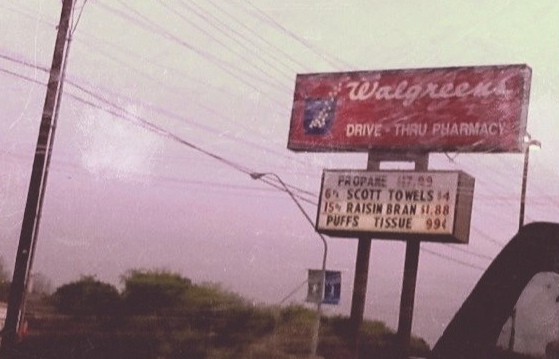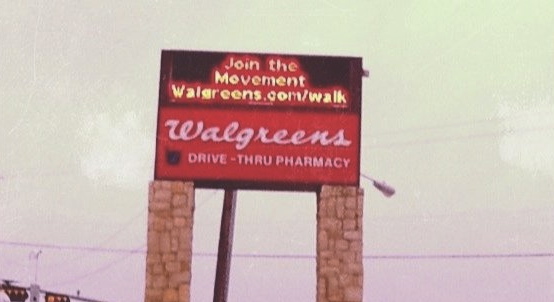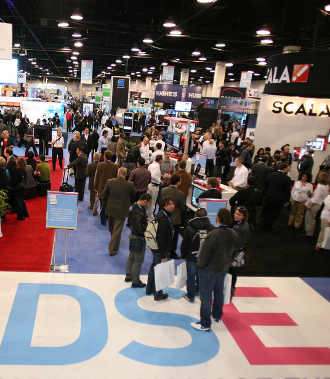I live in the country. No two ways about it. So, when I look around at all the (or lack of) technology in my everyday path out in the real world, on a daily basis, I’m certainly seeing the lite version. When I go closer to the city, or god forbid, in the city itself, it’s drastically different. Last month at SXSW in Austin, everywhere I turned there was a different technology, either displaying something in my face or enticing me to interact with it. And Austin, as a city, is completely different from Dallas as a city, as far as outdoor technology goes. I’m often actually amazed at how naked downtown Dallas is compared to other major cities like Austin or Chicago or NYC. Still, technology is all around us, everywhere we look, even in a naked city like Dallas, and even in the country where I live.
This morning, I stopped by every digital sign and interactive kiosk I noticed on my journey from my house to the train. And even though I live in a rural part of the country, I still encountered technology all along the way. Here’s that journey:
The sign outside the City Hall/Library, then the local Walgreens sign, then the Redbox outside its front doors, then the church’s sign, then the bank ATM, then the (boring) car wash clock, followed by the train ticket kiosk, then the train station sign, and finally, the sign inside the train. That’s the journey every morning.
So, I want to use today’s Friday 4-1-1 to reflect on the good, the bad, and the ugly of this technologically-fascinating & rich journey.
1. Snooze-fest – man, oh man, how boring can you get in terms of digital signage/interactive kiosks? These are the quintessential examples. The 1.o of both. And they’re all around because I mean, if they’re all the way out here in the country, they’re surely in the city, too. But you know what? I notice them because they’re….
2. Attention-getting – even if it is for a split second, I notice digital signs like these. Because they’re moving and/or colorful. Not for any other reason. Whereas it takes something more for me to notice a traditional billboard or poster – it usually has to stand out creatively. So, digital has that going for it. But the thing is – after I notice it, there are many times I instantly turn it off. If it’s not something and/or somewhere that interests me, I don’t care. So, in this regard (at least to me), digital signage is more effective at getting eyeballs (awareness) to see more messages (reach), but not necessarily more effective at affecting consideration. Regardless, there is still an opportunity to drive consumers deeper into the brand through the sign…
3. As a connector – even boring signs like these have the ability to drive consumers deeper – at the very least, to a website. I’m amazed at how many of these signs that don’t do anything other than slam those (scrolling) messages right down our throat and pay no attention to the opportunity to do a little bit more. It’s ironic that whoever is making those decisions – like the one to install digital signage – is choosing not push the consumer farther down the brand experience path. I know it’s hard. But welcome to 2011.
4. Utility machines – yes, digital signage and kiosks like this are good for something. And it’s utility. Not experience. I talk a lot about always looking for ways to create an experience through channels/platforms like these, but it can’t, and shouldn’t, be done all the time. I do wonder what the 3.0 version of these will be, though.
“Duh” – technology makes delivering messages more efficient. That’s probably the most obvious thing I’ve ever said on this blog?!?! But here’s the thing – how fancy do you need to get when the only objective is to deliver more messages, more efficiently? Seems to me that there would be a couple of solutions out there in the market that could handle all of the different ways and scale to achieve this objective. As it is now, it seems like there are 100’s of solutions. Why?
“Uh-huh” – sometime in the (near) future, these signs will all be connected – to each other and to us. The Internet of Things, while futuristic and fantastical, is real and coming. If we don’t see a 3.0 version of these signs before then, well, I guess we will then. I wonder if network operators and the whoosits and whatsits in the industry understand?
Yes, my daily journey is low-fi, in terms of DOOH/IOOH. But I notice it all and on a level, appreciate it. For the most part, it serves its purpose.
What do you see on your regular daily activities? Is it anything like this?
















